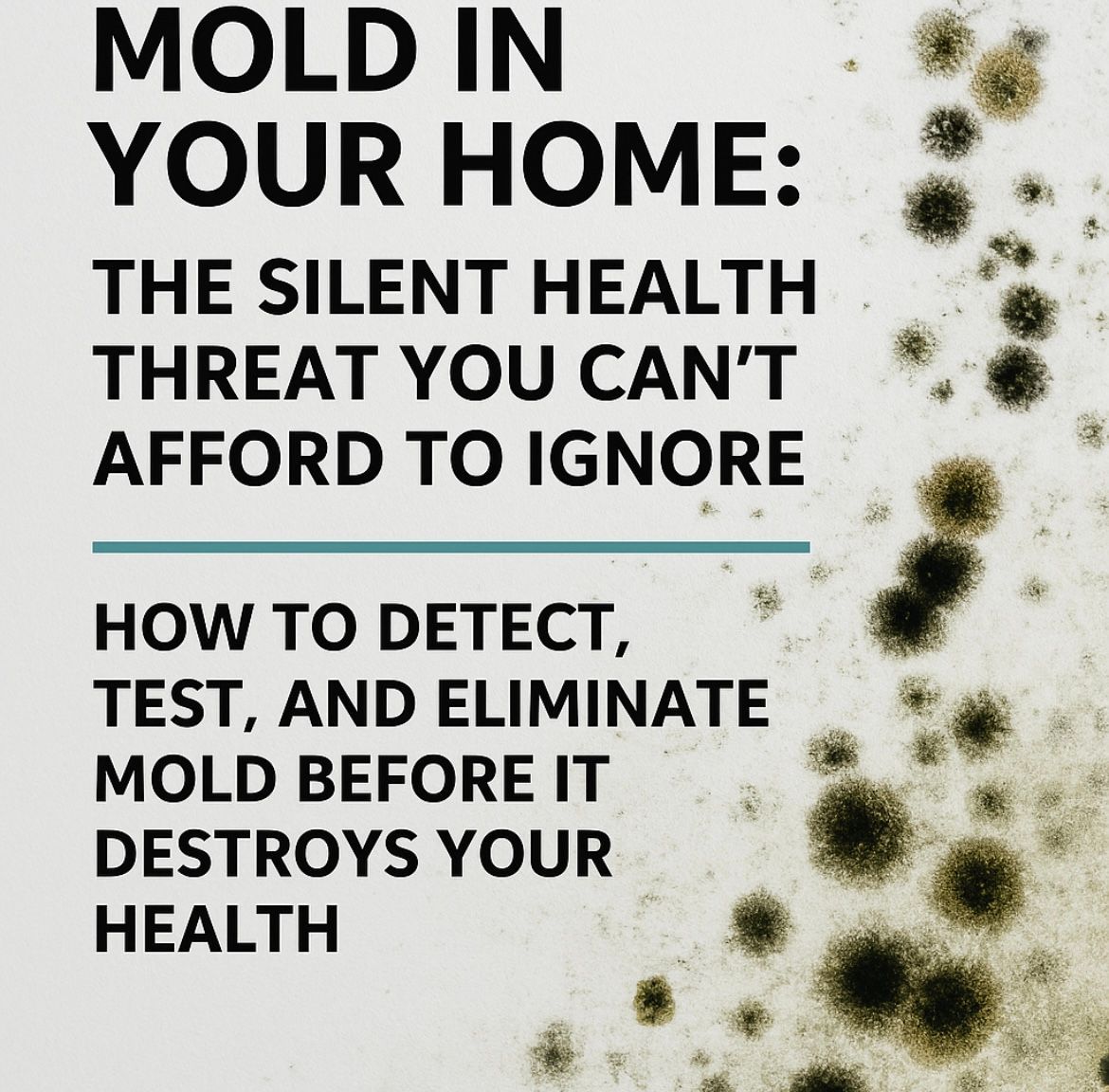Mold in Your Home: The Silent Health Threat You Can’t Afford to Ignore
How to Detect, Test, and Eliminate Mold Before It Destroys Your Health
Most people think mold is just an unsightly nuisance that shows up in damp bathrooms or musty basements. The truth? Mold can silently spread through your home, contaminating the air you breathe, the surfaces you touch, and even the walls behind your drywall without you ever seeing it.
For some, it’s just an allergy trigger. But for others, living with hidden mold can cause fatigue, brain fog, sinus problems, headaches, respiratory issues, chronic inflammation, and even autoimmune flare-ups. If your symptoms get worse at home but improve when you leave, mold could be the missing piece in your health puzzle.
Why Mold Is So Dangerous
Mold produces microscopic spores and mycotoxins that can:
- Weaken your immune system over time
- Disrupt gut health and increase intestinal permeability
- Trigger chronic inflammatory response syndrome (CIRS)
- Cause neurological symptoms like memory issues, anxiety, and depression
- Worsen asthma and other respiratory conditions
How to Test for Mold in Your Home
Not all mold is visible. That’s why testing is crucial. Here are the most reliable methods:
- ERMI (Environmental Relative Moldiness Index)
- Uses DNA-based technology to measure mold species in your home.
- Samples are collected from dust, which holds a history of what’s been in your air.
- Results include a score that can help you gauge how severe your mold problem may be.
- HERTSMI-2
- A simplified version of ERMI focusing on the five most dangerous mold species linked to serious health issues.
- Ideal for follow-up testing after remediation.
2. Air and Surface Testing
- Air sampling can detect active spores in circulation.
- Surface swabs can identify mold growing on visible or hidden surfaces.
Signs Your Home Might Have Mold
- Musty or earthy odors
- Water stains or discoloration on walls, ceilings, or floors
- Condensation on windows or walls
- Worsening allergies or respiratory symptoms indoors
- Recent flooding or water leaks
Living Safely in a Home with Mold
If testing confirms mold, you must take action immediately:
- Address moisture sources first (leaks, condensation, poor ventilation) mold cannot grow without moisture.
- Work with a professional remediation company trained in safe removal, containment, and air filtration.
- Use HEPA air purifiers to reduce airborne spores during and after remediation.
- Avoid DIY cleanup with bleach it often drives mold deeper into porous materials without removing mycotoxins.
- Support your body’s detox pathways through hydration, nutrient-dense food, and targeted supplements under professional guidance.
The Bottom Line
Mold in your home isn’t just a property problem it’s a health crisis in slow motion. The sooner you identify and address it, the sooner you can reclaim a safe living environment and protect your health.
If you suspect mold, don’t wait. The cost of ignoring it is far greater than the cost of testing and remediation.
Ready to get to the root of your symptoms?
I help clients uncover hidden environmental triggers like mold and create personalized recovery plans.
Book your consultation at www.executivefunctionalhealing.com

